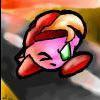All Activity
- Past hour
-

What are you listening to?
Rapidkirby3k replied to PassivePretentiousness's topic in General Discussion
- Today
-
A few major further steps to improve the clarity and spatiality of the sound by cleaning up the center area of a stereo mix from less relevant or counterproductive audio information -------------------------------------------------------------------------------------------------------------------------------------------------------------------------------------------------------------------------------- Although I haven't been able to continue working on the composition of my Crisis Core remix for the last few months due to a whole lot of work, both in my private and professional life, I was able to achieve a real breakthrough in my mixing concept shortly after my last post in this thread. The result was a kind of improved LCR mixing method (LCR for left-center-right), which not only brings more clarity, more spaciousness and width to the mix, but also allows much finer panning for the spaces in between (instead of just simple LCR), with considerably fewer steps compared to doubling the tracks for processing a hard-left and hard-right side of a single instrument or sound source and with the aim of a mixing result where the sound is also completely convincing on a normal stereo system (and not only on studio monitors and or studio headphones), ... ... which was an important core concern of mine in this thread, as I was previously able to perceive audible qualitative differences in comparison to a really professional mixing and I didn't know why this was the case or why it was so clearly apparent on a normal stereo system. I've also put in some audio samples around the end of this comment to show the further improvements in the sound quality of the mix. … I would almost call this audible problem I've especially experienced at standard stereo systems the "overloaded center effect". The center in the mix (please correct me if I'm not quite right in my definition) is probably something like the crosstalk between the left and right sides of a stereo system (it is said that the center is the sum of the right and left channels divided by 2). If you remove a large part of this crosstalk in the most sensible way possible (i.e. you remove as much irrelevant or counterproductive sound information as possible from the center area - especially concerning the reverb), you can achieve considerably more clarity in the mix and a better assertiveness of the individual instruments. ... I guess in professional terms it's called "mid-side processing" where you remove certain audio information like instruments, synths and effects from the center to bring it to the sides. A good traditional way to do it is by hard left or hard right panned signals and a counter signal on the other side (for a realistic stereo image without involvement of the center area) like in the LCR mixing method. As soon as you use a softer panning (let's say, the pan knob ist only at -10 dB on the right side), you get also crosstalk of the sides with the center - which isn't the evil of mixing (it also can provide some interesting spatial information), but you should not overdo it in order to get a clean mix. If just a few sound signals like drums and vocals/lead instruments fill the gap between center and sides, while the bass plays only in the center and all the other instruments are fully panned to the sides, it might be really beneficial for the mix. Of course you can also mix the bass a bit more from the center to the sides and put the drums fully to the center and/or the sides depending on the music genre and your personal taste, but always keep in mind that you should not produce too much mid-side crosstalk, especially not with many instruments or other sound signals in the same frequency range, because it can cloud and clog up your mix much faster (especially in soundtracks with lots of instruments and various audio information - in comparison, this stuff won't matter too much at a solo piano part in terms of mixing quality). … In my DAW Samplitude Pro X4 Suite I use my integrated 2-channel surround feature (which simple encodes spatial information in a standard stereo signal in connection with a visual interface) not only for getting some more depth in the mix, but also for the regulation of the center/side ratio of the instruments, effects and all the other audio information. It looks like this in my DAW: In this screenshot you can see the spatial settings and measurements of a harp playing together with its very own aux reverb send. In the right part you can see my setting of the instrument within my 2-channel surround panner (just left and right channel are involved, center is completely left out), the aux reverb send of this instrument has a similar panning. And in the lower left part with the vectorscope, you can see once again, that the harp with its aux reverb send is out of the center and widely panned. Just note that this metering device is loudness-based or volume-based - this means that the louder the measured signal gets, the bigger the expanse of the graph will be. So, if you want to check how far the signal is panned to the sides or how much it is in the center, you have examine the ratio beween width and height of the graph (big height und low width means, the signal is more in the center, while equal height and width means that the signal is on the sides - and a bigger width than height means, you are probably cheating with a stereo enhancer - but don't worry, tools like these doesn't sound good 'n' natural either). … Here's another screenshot which shows the panning of the new trumpets (including the measurements of the aux reverb send of the trumpets, which is exactly panned like the trumpets) in my Crisis Core remix: As you can see, the center is not involved again (same thing goes for the aux reverb send, of course), and I've lowered the volume on the right channel by 7 dB. This means that - with the help of the 2-channel surround editor I can set up a pretty fine stereo panorama without any center involvement and in only one track (plus one more track for the aux reverb send, of course)- with the conventional LCR mixing method I might have needed one track for the left side and one track for the right side (with different volumes and/or delay effects for each side) to create a similar stereo panorama (plus one or even two more tracks for the also hard panned aux reverb sends). … If don't have something like a 2-channel-surround editor in your DAW, just stick with the mentioned LCR mixing method to clean up (especially the center of ) your mix. There might be also another solution for easily reducing the center volume of a track in your DAW. Your DAW might also have some kind of the stereo editor for each track (in my DAW, I get into the stereo editor if I do a right mouse click on the virtual pan knob in the track editor on the very left side - after this, the window with the stereo editor for this track opens up, and there I can reduce the center volume under "Kanalabsenkung Mitte (dB)", but only with 6,02 dB at the maximum - don't ask about this kind of precision in a volume value, I really dunno why): ... In the next screenshot, you can see how I panned the electric bass in this track (measurements only show the electric bass with deactivated aux reverb send which is fully panned to the sides at the same depth level like the instrument): Here you can see, that the electric bass plays almost fully in the center without the sides ("almost", because I like it much more if the bass hops a bit around the center without being a too stiff mono center thing - so I open the bass just a very little bit towards the sides, but only towards the lower surround-information-encoding stereo channels, which can be used to put the signal source more in the back of the mix). The vectorscope and the directionmeter next to it show once again how the electric bass with the deactivated aux reverb send behaves in the stereo panorama. … And in this additional screenshot, you can see how the whole track (in the final showdown part with lots of different instruments playing together) behaves in the stereo panorama: By playing and measuring the whole soundtrack, the vectorscope shows a really wide panning and a very clean center (where mainly the electric bass plays and only a few other instrument tracks like drums, power chords and some sort of leading piano arpeggios are panned between the center and sides, affecting both with a bit of crosstalk, giving the mix a bit more spatial feel - something that could be instantly ruined if you put too much crosstalking audio information in the center or between the center and sides). All other instruments in the track are panned out of the center fully to the sides, but they still have their unique stereo pannings between the left and right side. The aux reverb sends for all instruments instead are completely panned out of the center fully to the sides without any exceptions, which cleaned up the whole soundtrack a lot. Either the aux reverb sends are panned the same (or in a similar) way like the instruments (same depth, similar left-right-side behaviour in the stereo panorama - but always without involvement of the center area, even as aux reverb sends for the few instruments which affect the center) . Or, for example, if an electric guitar is panned with a volume of - 5 dB on the right side (so that the instrument is 5 dB louder on the left side), I've panned the aux reverb send for this electric guitar hard to the right side. … So, just a final summary on the mentioned (and some additional) changes I made in the mix to radically clean it up and to improve it further: ------------------------------------------------------------------------------------------------------------------------------------------------------------------------------ A) I got all the aux reverb effect sends out of the center fully to the sides (maybe one of the most important things I did in this stage of mixing for improving the clarity). No matter how you do it - if by hard pannings like in the LCR mixing method or with visuals tools like a 2-channel surround editor, where you can remove the volume of center area - just do it. B) I got also most of the instruments (except bass and the few instruments that are panned between center and sides) out of the center area. C) I split the track with the acoustic drums into several tracks for the individual drum elements (bass drums, snare drums, tom drums, cymbals) - just to put different EQs on the different drum elements for improving the clarity within the drums section, between the drums and the other instruments and for additional cleaning up the center area. D) I reduced a few annoying or slightly clashing frequencies from certain instruments with peak filters. For example, I made a little peak cut for the bass drums at around 200 Hz by 5 dB: Nothing really earth-shattering - but it transforms the kick drum from a former "bop, bop" a bit more into a smacking "bip, bip" and makes the kick drum a bit more assertive against the electric bass in the mix. I also made some peak cuts on the acoustic guitar playing the rhythmic chords: It makes the guitar sound less blocky, much lighter and more stylish, letting a few other instruments "breathe" more in the mix. E) I removed some overloaded, gimmicky and unnecessary effect plugin chains from my mix. For example, in the previous mixing version I used two different reverb plugins on the acoustic drum kit - one as a preceding direct insert and another one as a low-cut-liltered aux reverb send - just to let the kick and snare drums sound mightier. I completely removed the direct insert and only adjusted the low-cut-filtered aux reverb send for all drum elements in a way that lets the kick 'n' snare drums sound also powerfully reverberating - but way cleaner without unnecessary low-end reverb mud throughout the mix. F) True to my previous motto "It's all in the mix" or "Complicated masterings are just missed opportunities in mixing", I removed the master EQ plugin again. I somehow had the feeling that it was sucking a bit of the punch out of the mix in the low-end range because it was taking the range and power out of all the instruments in the lower frequency range - unfortunately also those that are supposed to play right there. So, I went back to single-track EQing and made a few more adjustments to the relevant tracks. … And lastly, I want to show ya the final audio samples, where you can finally listen to the mixing progess I've made with all these steps and compare the last version of this audio sample (the results before the mixing approaches mentioned in this post) with the new version (the results after the newest mixing approaches)... 6) Latest update of the remix section showed in the previous audio samples (former version) -------------------------------------------------------------------------------------------------------------------- 6) Latest update of the remix section showed in the previous audio samples.mp3 (Somehow, the former audio sample doesn't seem to work in the new posting - gotta find somebody who will fix it, maybe the almighty IT janitor DarkeSword. But not today anymore - until stuff gets fixed, just listen to the audio sample number 6 in my previous post.) ... 7) New mixing update of the remix section after radically cleaning up the center area (new version) --------------------------------------------------------------------------------------------------------------------------- 7) New Mixing Update Of The Remix Section After Radically Cleaning Up The Center Area.mp3 ... Feel free to join the discussion and tell me how you like the new approaches in my mixing concept. )) For the next big update, I want to compose the last few things I still have in my vision for this remix and maybe even deliver a finished new remix version of the whole soundtrack for a much bigger comparison.
-
 Xaleph reacted to a post in a topic:
Welcoming some new staff members!
Xaleph reacted to a post in a topic:
Welcoming some new staff members!
-
 pixelseph reacted to a post in a topic:
Welcoming some new staff members!
pixelseph reacted to a post in a topic:
Welcoming some new staff members!
-
 Pavos reacted to a post in a topic:
Regarding Recent Technology Advancements
Pavos reacted to a post in a topic:
Regarding Recent Technology Advancements
-
 Pavos reacted to a post in a topic:
Welcoming some new staff members!
Pavos reacted to a post in a topic:
Welcoming some new staff members!
-
 Pavos reacted to a post in a topic:
Welcoming some new staff members!
Pavos reacted to a post in a topic:
Welcoming some new staff members!
-
 Pavos reacted to a post in a topic:
Welcoming some new staff members!
Pavos reacted to a post in a topic:
Welcoming some new staff members!
-
 Pavos reacted to a post in a topic:
Welcoming some new staff members!
Pavos reacted to a post in a topic:
Welcoming some new staff members!
-
 Pavos reacted to a post in a topic:
OCR03987 - Seiken Densetsu 3 "For King and Country"
Pavos reacted to a post in a topic:
OCR03987 - Seiken Densetsu 3 "For King and Country"
- Yesterday
-
Falco-X joined the community
-
 Cyril the Wolf reacted to a post in a topic:
OCR04632 - Mega Man Battle Network "Mega Jam Disco Network"
Cyril the Wolf reacted to a post in a topic:
OCR04632 - Mega Man Battle Network "Mega Jam Disco Network"
-
 Cyril the Wolf reacted to a post in a topic:
OCR04005 - Chrono Cross "Trust My Unwavering Heart"
Cyril the Wolf reacted to a post in a topic:
OCR04005 - Chrono Cross "Trust My Unwavering Heart"
-

What are you listening to?
WiFiSunset replied to PassivePretentiousness's topic in General Discussion
John Summit - Human: https://youtu.be/6mn7OonJfk4?si=_9LMDUfKOUAfwlJs -

OCR01382 - Human Race "Bando alle Seghe"
CJthemusicdude replied to djpretzel's topic in ReMix Reviews & Comments
My immediate first reaction is that this reminds me of the soundtrack for tetris effect due to the vocal chops. This remix came out over a decade before that game though, so way to be ahead of the groove! The remix starts gently enough, with some nice plucking bells, then the vox samples come in. This is what you would call a masterclass in vox sample usage. That ongoing beat with the "Hut hut OoooOOoh" is gonna be lodged in my brain for a while. The beat and groove is impeccable, gives me 90's style flashbacks with the shaking hats and low groovy bass. Things kick into amazing tier when that smooth lead comes in around 1:28. Then we have the acoustic guitar bits having their fun in the background, what a ride! The slow section comes in, and like the remix, I let out a nice exhale of relaxation while the tablas politely groove. This remix screams :catjam: energy, it is an absolute foot tapper/HeadBanger. 10/10 would listen again. -
Leo Jackman Proyect changed their profile photo
- Last week
-
MaickelJ joined the community
-
That's what I've always loved about OCR. Y'all care about human interpretation, performance realism, personal touch, and other aspects of music that go underappreciated by the casual listeners out there. At first I thought the perspective towards AI-generated music was because of that philosophy, but I do understand that there is also the bit about unethical training practices. Good to see OCR still going strong, and I hope to continue seeing real music coming out from real artists, using real production efforts and/or real studio time!
-
Feel free to share this with your friends :) This is a 1 HOUR continuous mix of special picks from my collection of atmospheric / electronic VGM ReMixes that I've written in the past 13 years! Great for stream listening, vibing throughout the day, etc. It's also time-stamped all the way through! Tracklist (all by Timaeus, but 1st track includes @Chimpazilla): 0:00:00 : Cloudhopping (Yoshi Touch & Go ReMix) with Chimpazilla 0:04:01 : Amorphous Freeze (Mega Man Zero 2 ReMix) 0:07:54 : Let's Bust Some Viruses! (Mega Man Battle Network series ReMix) 0:11:24 : Serenity & Grace (Chrono Cross & Chrono Trigger ReMix) 0:15:35 : The True Final Fight! (Pokémon Mystery Dungeon: Explorers series ReMix) ~ not on OC ReMix yet 0:19:11 : Progressive Memory (Final Fantasy 4 & 6 ReMix) 0:23:13 : The Oud, The Santoor, and The Sitar (Dungeonmans ReMix) 0:26:52 : Not Just Elevator Music (Yu-Gi-Oh! Forbidden Memories ReMix) 0:30:00 : Contrapuntal Field (Fittest & Sonic the Hedgehog ReMix) 0:32:46 : The Kabuki Warrior Kicks Back (Mystical Ninja Starring Goemon ReMix) ~ not on OC ReMix yet 0:36:40 : The Arc That Spans The Heavens (Yu-Gi-Oh! Duel Links ReMix) 0:40:03 : The Lost Explorer (Pokémon Mystery Dungeon: Explorers of Sky ReMix) 0:44:36 : Big Brute Force of Nature (Mega Man 9 ReMix) 0:48:06 : Sky-High Rollers (RollerBall ReMix) 0:51:58 : Astral Projection (Globulous ReMix) 0:55:49 : The Art of Zoning Out (Pokémon Scarlet/Violet / Pokémon Mystery Dungeon ReMix) 0:59:19 : Thy Everlasting Winter Wind Blows (Pokémon X/Y ReMix) 1:02:04 : CONNECTED! (Pokémon Super Mystery Dungeon ReMix)
-

OCR03804 - Seiken Densetsu 3 "Mother of Turmoil"
CJthemusicdude replied to Liontamer's topic in ReMix Reviews & Comments
This is a splendid remix! The march-like percussion pushes the energy of this remix up and combines with the powerful horns and chromatic percussion to create a strong and fun audio environment! Excellent job on this remix, bravo! -

OCR03806 - Tyrants "The Vast Glass Orb"
CJthemusicdude replied to Liontamer's topic in ReMix Reviews & Comments
This remix was HEAVY. Those guitars, keys and drums are definitely hitting hard, this whole remix feels like it's drenched in some layer of lore and plot that I am missing out on. (Probably because I've never played the source.). This remix was very well-crafted, and I tip my imaginary hat to you! -

OCR03807 - Seiken Densetsu 3 "The Fairytale Fair"
CJthemusicdude replied to Liontamer's topic in ReMix Reviews & Comments
Simply put, this was a lovely remix. It bounces along and carries a pocket full of whimsy to spread around the audio space! I enjoyed the bells and the general soundscape of this remix. It was light, fun and pleasant to listen to. Great job! -

OCR03808 - Seiken Densetsu 3 "Nightshade Masques"
CJthemusicdude replied to Liontamer's topic in ReMix Reviews & Comments
That piano was movin and schmovin! This remix was delightfully eerie. I enjoyed the swirling pads/sound effects going on in the background. The sound design for this remix was quite exquisite! I especially enjoyed the vocal samples and how they were utilized. Fantastic remix! -

OCR03809 - Darkwing Duck "Playtime's Over"
CJthemusicdude replied to Liontamer's topic in ReMix Reviews & Comments
Very strong intro! This remix was an absolute bop from start to finish. That bass was PHAT smooth and groovy. The percussion was tight and this remix just had a flair for style and coolness. Excellent job on this! -

OCR03810 - Mega Man 2 "Made of Metal"
CJthemusicdude replied to Liontamer's topic in ReMix Reviews & Comments
Ah yes, this is a nice chippy groovy bop! I can confirm the foot tapping nature of this remix, I may be willing to concede some head nodding to the music as well, but I'd have to confirm with my sources. The data suggests that this remix is indeed quite baller and cool, and should be listened to by more people. -

OCR03811 - Seiken Densetsu 3 "The Fearless Angel"
CJthemusicdude replied to Liontamer's topic in ReMix Reviews & Comments
I was absolutely not expecting the japanese vocals to come through, I was physically taken aback and had to turn this remix up and listen closer. This remix was insanely cool, I can tell a lot of extra effort went into this. The instrumentation was fantastic, the arrangement was great, this was a stellar remix! -

OCR03813 - Seiken Densetsu 3 "The Final Moments"
CJthemusicdude replied to Liontamer's topic in ReMix Reviews & Comments
If I had ever played SD3, I'm sure this remix would hit me right square in the feels, because I can feel the emotion and power resonating through this! Simply fantastic piano work, the addition of the strings helps make this remix sound even better! Two thumbs up! This was great! -

OCR03814 - Final Fantasy VI "Dark World of Beats"
CJthemusicdude replied to Liontamer's topic in ReMix Reviews & Comments
Playing all the instruments yourself is quite impressive! The tone shift around 2:20 transformed this remix into a whole different vibe. This was definitely on the offbeat side, but ultimately very cool. Great job on this remix! -

OCR03815 - Mario Kart DS "Tilt & Drift"
CJthemusicdude replied to Liontamer's topic in ReMix Reviews & Comments
I'm usually hit or miss on soundscape intros or establishing atmospheres, but that pinball opening was very well done and transitioned to the remix very well! This was indeed very funky. I was not mentally prepared for a panning bass but it certainly made this remix very interesting! Those funky guitars were an absolute highlight, so fresh, so cool. Awesome job on this remix! -
VeronicaA changed their profile photo
-
Dane Jacobs changed their profile photo
-
Steffan Andrews changed their profile photo
-

OCR04649 - Final Fantasy IX & V "Freya's Curse"
CJthemusicdude replied to Liontamer's topic in ReMix Reviews & Comments
I really enjoyed the synth lead that comes in at 1:23! I also really enjoyed that soft plucking instrument that starts at 4:22. This was very good! An excellent remix for sure. Great work on this! -

OCR04649 - Final Fantasy IX & V "Freya's Curse"
Geoffrey Taucer replied to Liontamer's topic in ReMix Reviews & Comments
Intro was gorgeous, but the real "oh shit this is gonna be a good one" moment for me was when the drums came in around 0:52. Love the choice of synth tones, love how punchy the drums are, love that triplet rhythm. -

OCR04649 - Final Fantasy IX & V "Freya's Curse"
Liontamer posted a topic in ReMix Reviews & Comments
What did you think? Post your opinion of this ReMix.


















